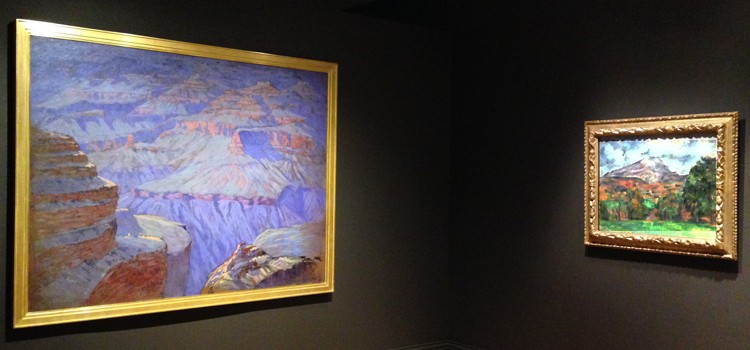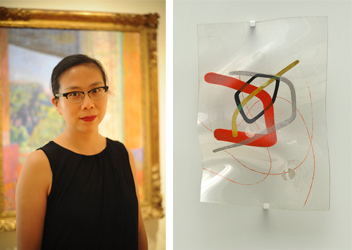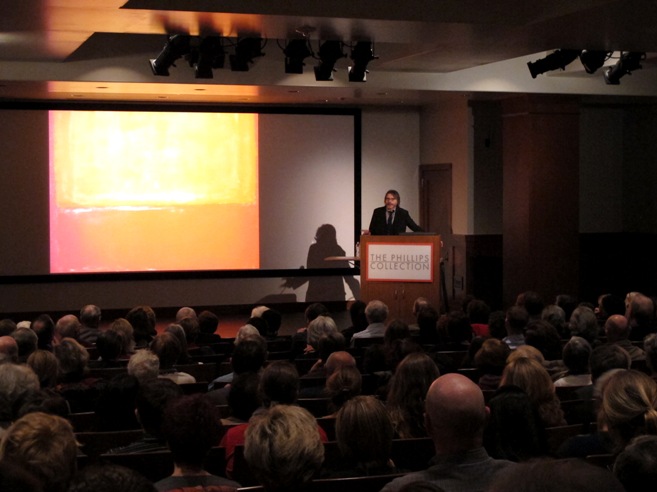In preparation for his Curator’s Perspective tonight, Seeing Nature Curator Klaus Ottmann shares some thoughts on the exhibition.

Installation view of Seeing Nature: Landscape Masterworks from the Paul G. Allen Family Collection. Arthur Wesley Dow, “Cosmic Cities, Grand Canyon of Arizona” (1912). At right, Paul Cézanne, “Mont Sainte-Victoire” (1888–90)
But to the Eyes of the Man of Imagination
Nature is Imagination itself.
As a man is so he sees.
— William Blake (1799)
What is the power of landscapes? What is it that makes the vision of artists applied to canvas able to connect our individual lives with the cosmos itself?
Innate to any landscape are the emotions we feel in its presence. These moods and feelings are not merely in our brains, our heart, and our senses; they are also inherent to the landscapes themselves. For the ancient Greeks, each landscape evoked particular divinities. For the 17th-century English travelers crossing the Alps to Italy, it was the feeling of the Sublime, a “delight that is consistent with reason yet mingled with Horrors, and sometimes almost with despair.”
As William Blake noted in 1799, there is a special connection between Nature and the Imagination. For this exhibition, the Allen Institute for Brain Science has been investigating this special link: “People talk about how our brains are wired to see landscapes, to look at landscapes and to see what’s going on in them—so there’s something about landscapes that seems almost universally attractive,” Paul Allen has said. “It’s a way of looking outward.”


